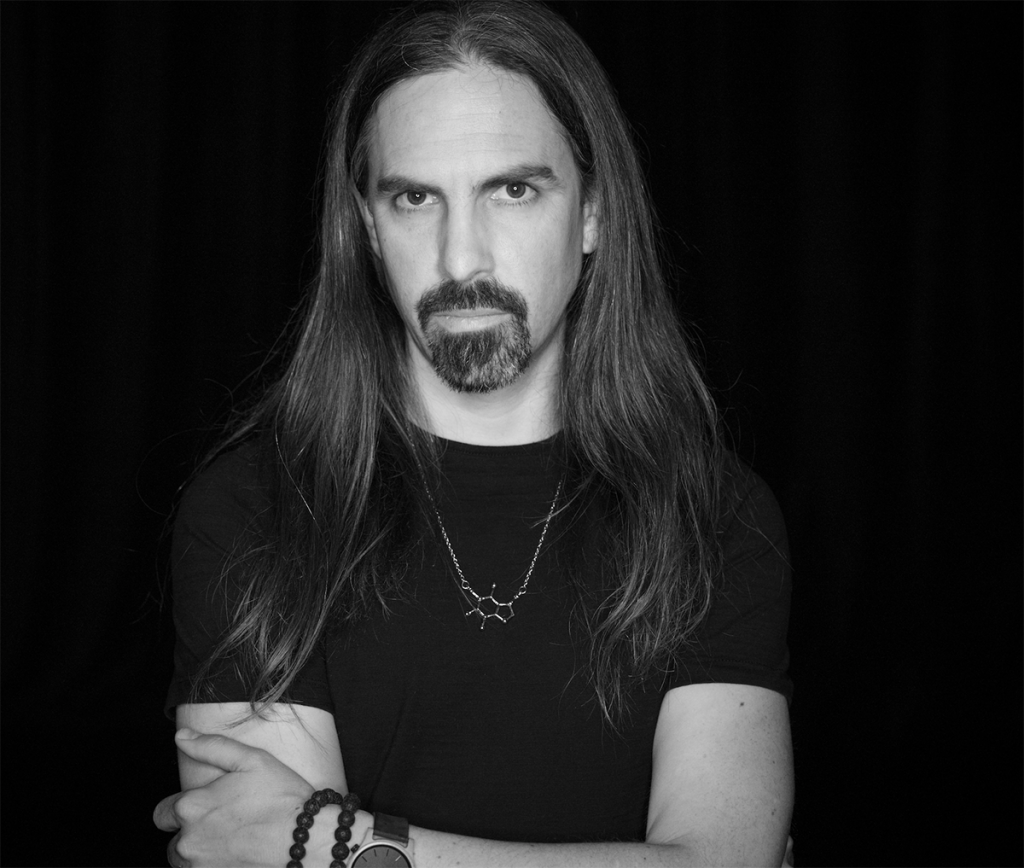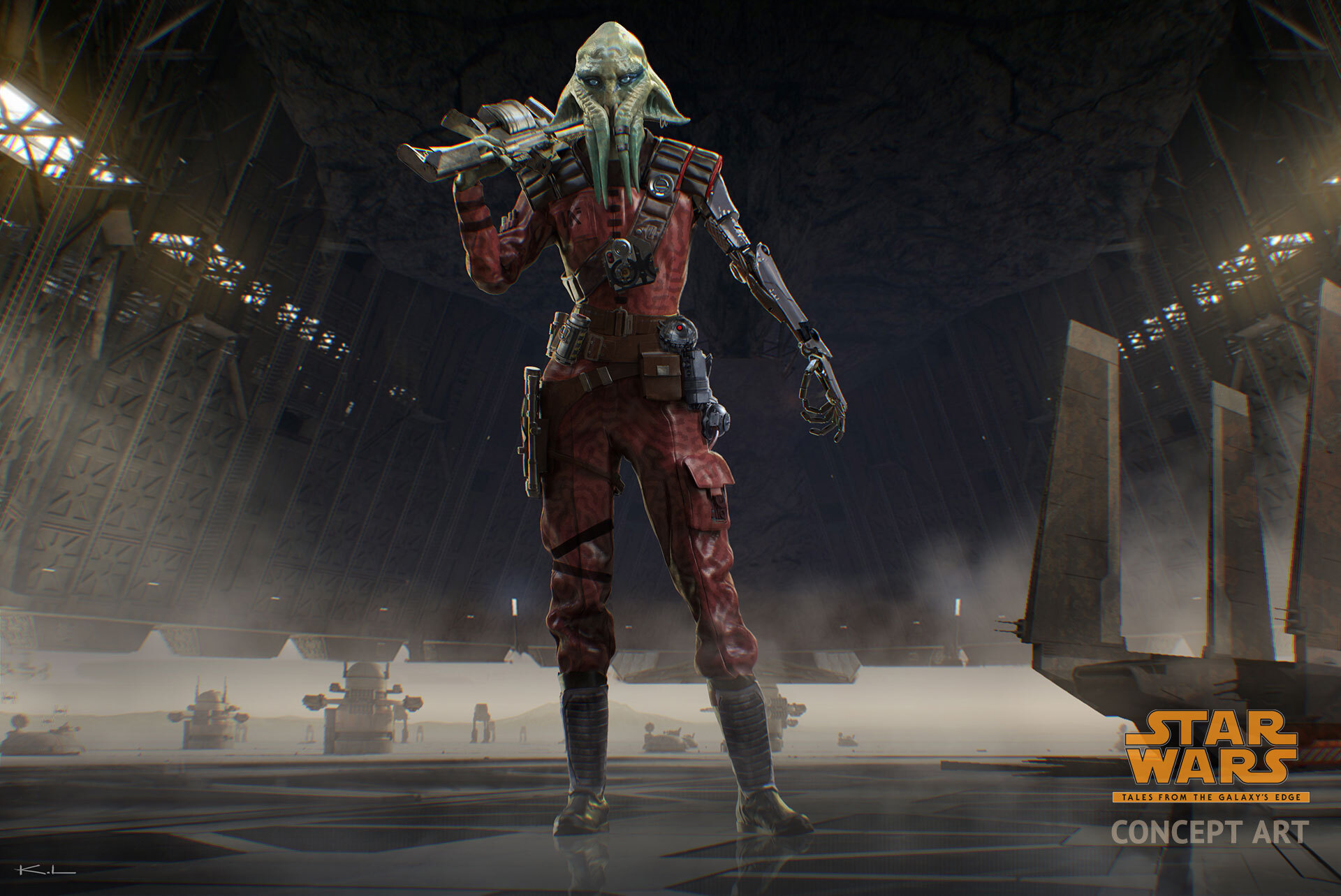ILMxLAB’s upcoming virtual reality experience, Star Wars: Tales from the Galaxy’s Edge, extends and expands the world of Batuu as players meet new characters and discover never-before-seen areas of the planet — all while starring in their own exciting adventure. For the creative team, the project offered a unique challenge: Not only did it need to capture the look and visceral feel of Star Wars, but it also needed to seamlessly blend into Star Wars: Galaxy’s Edge, the immersive lands at Disneyland and Walt Disney World Resort, where audiences were able to visit Batuu for the first time.
As with all things Star Wars, a key creative element was the score. Tales from the Galaxy’s Edge enlisted three different composers, each with their own unique styles and perspectives, to tackle different facets of the experience.

Emmy-winning composer Bear McCreary, known for television shows like Battlestar Galactica and The Walking Dead, films like 10 Cloverfield Lane, and games like the hit God of War, scored the primary adventure that runs through Tales from the Galaxy’s Edge. In that storyline, players assume the role of a droid repair technician who crash lands on Batuu and must face off against a nefarious Guavian Death Gang cell and its leader, the villainous Tara Rashin. We interviewed McCreary about his work on Tales from the Galaxy’s Edge, how scoring for VR is different than other mediums, and how he created “Tara’s Theme” — one of his awe-inspiring tracks that we’re excited to preview today.
Tara’s Theme by composer Bear McCreary for Star Wars: Tales from the Galaxy’s Edge
You’ve worked in multiple mediums, from film and television to games. How does your approach differ when you’re creating a VR score?
On a medium such as a TV show or a film, the score is there to help carry the audience along a singular journey the director has crafted for them. A video game requires a different approach because the pace and story depend on input from the player. In writing for Tales from the Galaxy’s Edge, I discovered that writing for a VR game is an even trickier challenge, because the player’s experience is even more immersive. The music exists in a three dimensional sonic world. I ultimately shifted my mindset to imagine I was writing music for an actual experience someone would experience in the real world. I thought about actually walking and climbing through these environments, and imagined the music I would want to hear. It was wildly inspiring!
What influences from the planet of Batuu made their way into your score?
My musical goal with this project was to create a soundtrack that feels like it might have actually originated from the planet Batuu itself. I used many acoustic textures such as guitars, simple woodwinds, tribal percussion, and bowed Middle Eastern string instruments to create an organic palette. I also incorporated synthesizers and manipulated samples to create an alien aesthetic.
Of course, Batuu is part of the broader Star Wars universe, so I didn’t adhere strictly to these colors. I also incorporated many symphonic techniques and colors used by John Williams throughout the saga to subtly root the player’s experience in the broader mythology of the franchise. On the surface, this doesn’t sound like a traditional Star Wars score, but… the influence is undeniably there. My hope is that players wandering the wilderness will absolutely feel like they’re uncovered an unexplored pocket of the Star Wars universe.
When you blend elements like that, do you prefer using analog or digital instruments?
Everything in my music for Tales is what it sounds like. When you’re hearing what sounds like digitally mangled, processed synths, that’s what you’re hearing. But, the score is filled with live recordings of real musicians because no computer can replicate that emotional impact. We were fortunate to work with brilliant soloists playing specialty instruments from around the world, and a symphonic orchestra that provided the scope and scale fans expect from Star Wars.
Tara Rashin is such an imposing character, which you really capture in the score. What inspired “Tara’s Theme”?
Tara is an antagonist, but she isn’t pure evil. She’s a marauder with her own goals and intentions. To represent this, I emphasized ethnic instruments and female vocals. These distinct colors gave her an operatic, memorable theme that I hope resonates with players as they encounter this unforgettable character.
What were your first impressions of Tales from the Galaxy’s Edge when you saw it in VR for the first time?
I was thrilled with the tactile nature of the environments. The Star Warssaga has connected with audiences for over four decades because it excels at two things: telling a good story, and building a believable world. I was immediately struck by this new project’s ability to bring a new dimension to the worldbuilding, while still retaining that core connection to storytelling and good characters.
One of the more unique aspects of Tales from the Galaxy’s Edge was that the team unexpectedly found themselves needing to work on the project remotely. Did that bring challenges in terms of scoring?
Creating music during a pandemic can be a frustrating experience. Obviously, the production team was never in a room together. I was unable to physically attend most recording sessions. Though that was a disappointment, I must say that I barely noticed it after a while. Rather than noticing what was keeping us all apart, I just felt this overwhelming sense of joy and community deriving from what was bringing us all together: we got to make music for Star Wars!
Star Wars: Tales from the Galaxy’s Edge will be released on November 19th for Oculus Quest. You can follow Bear McCreary on the below social channels:

